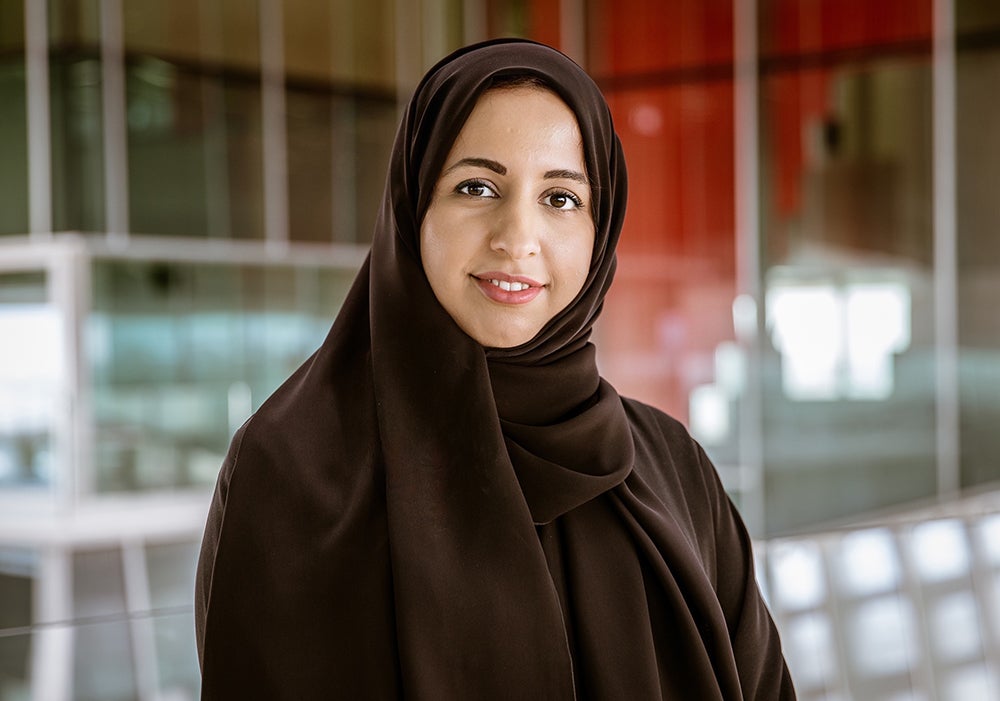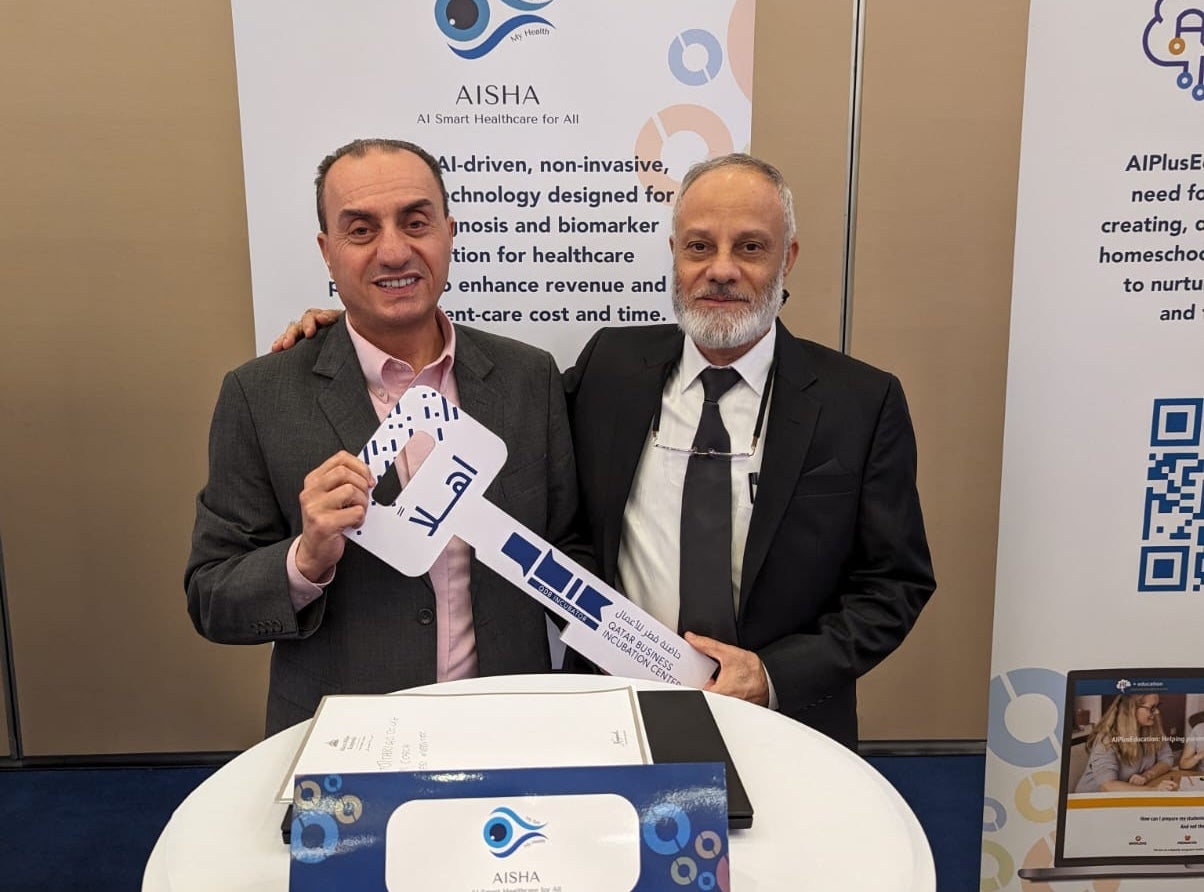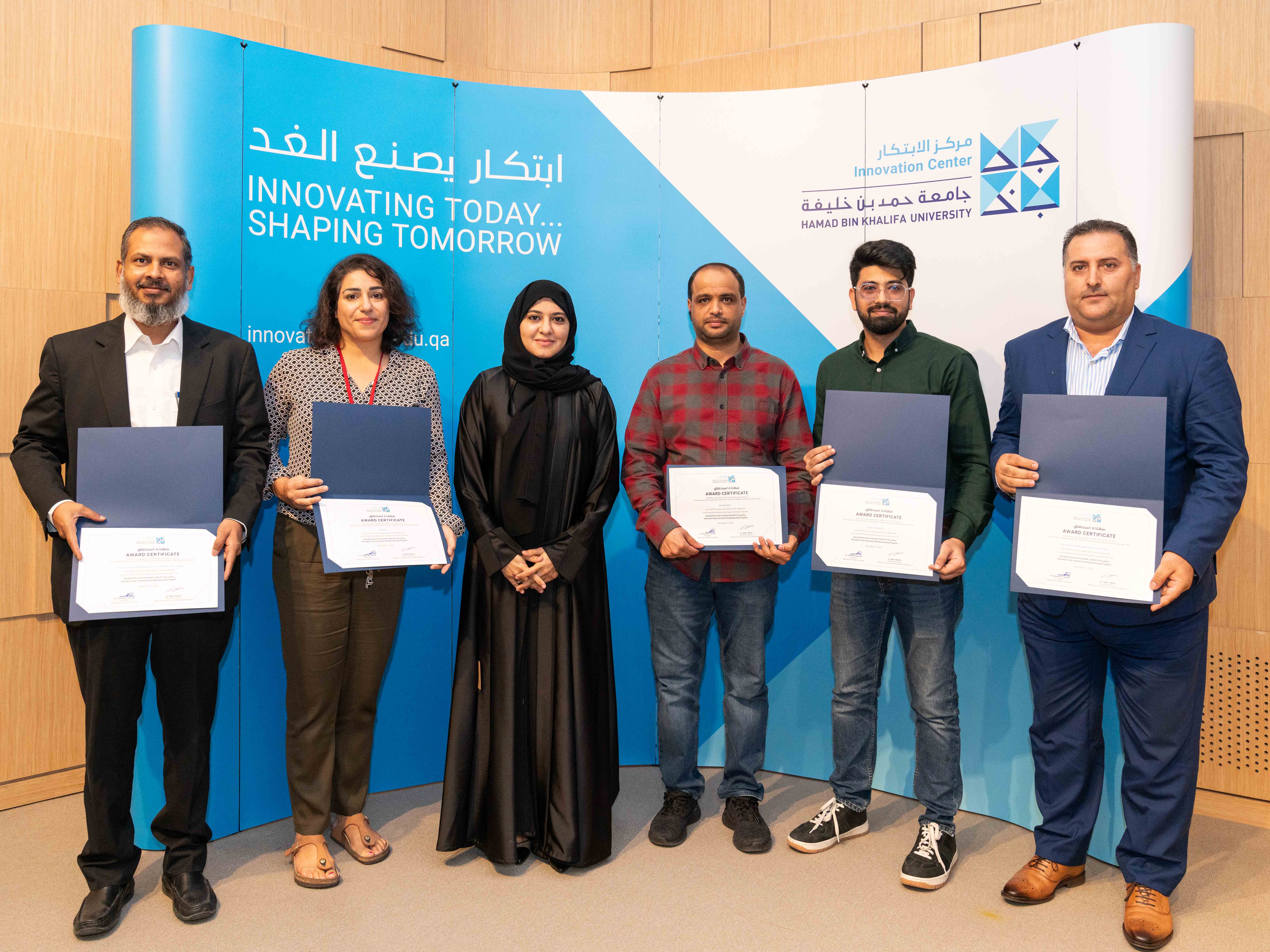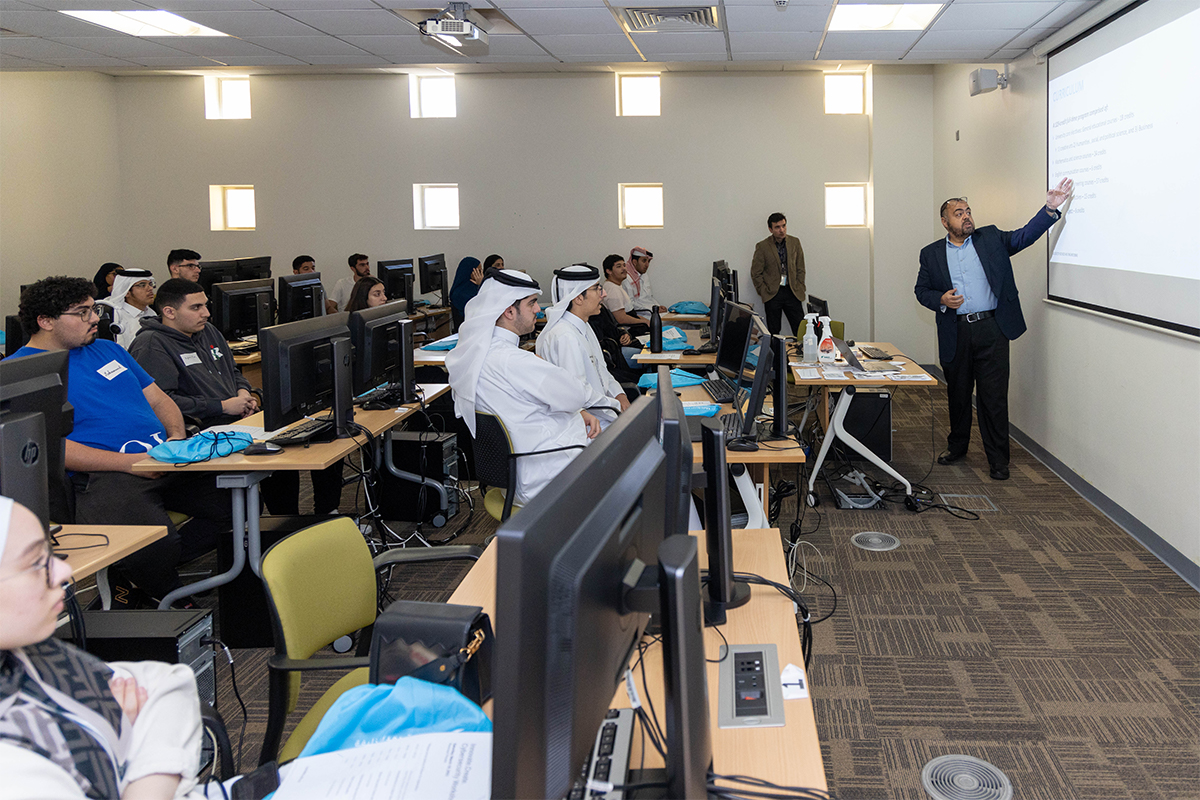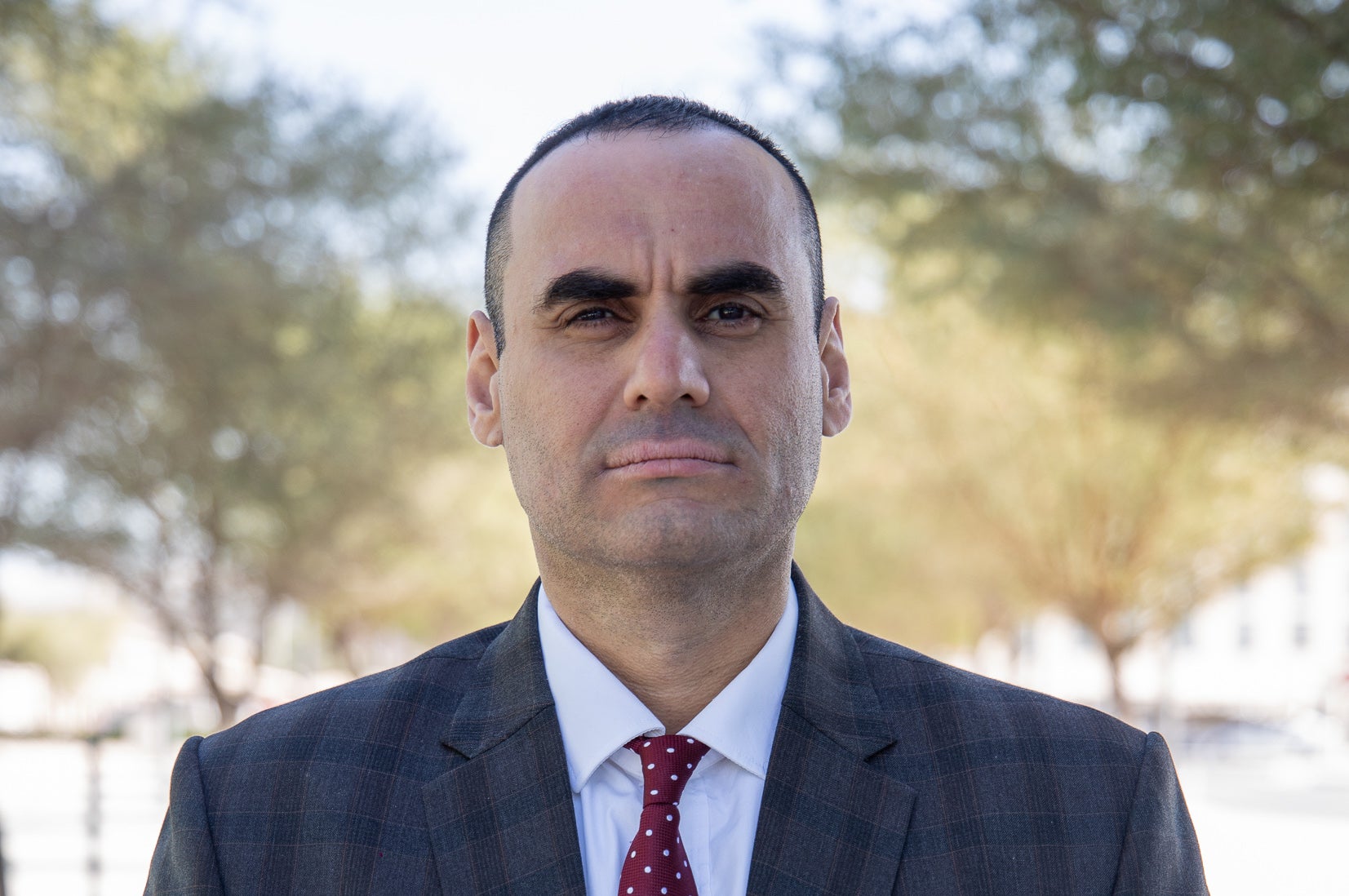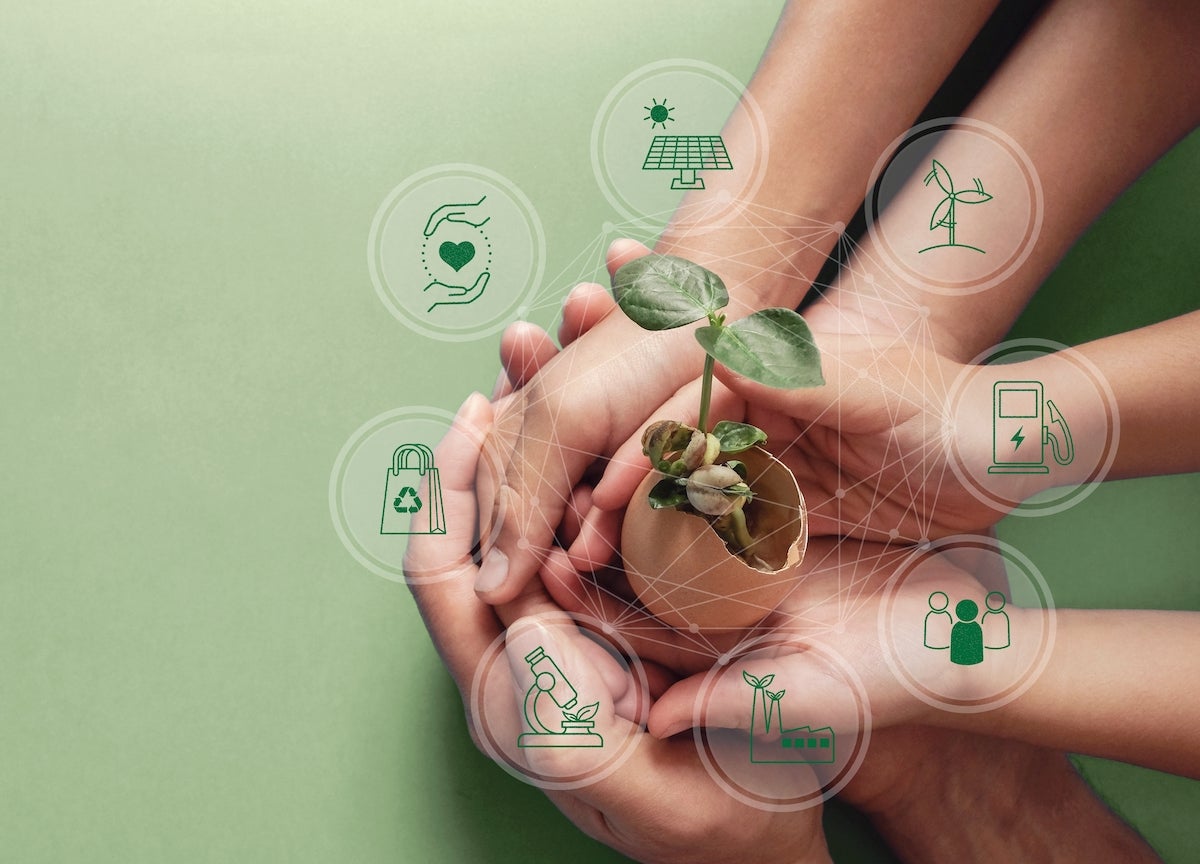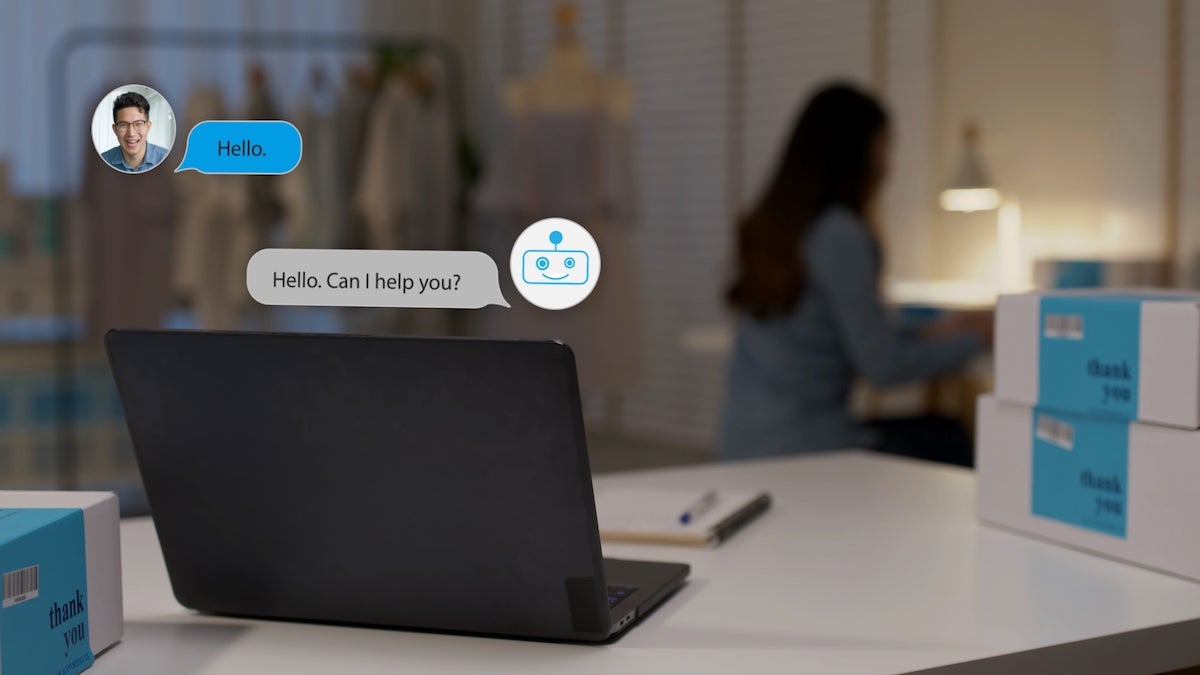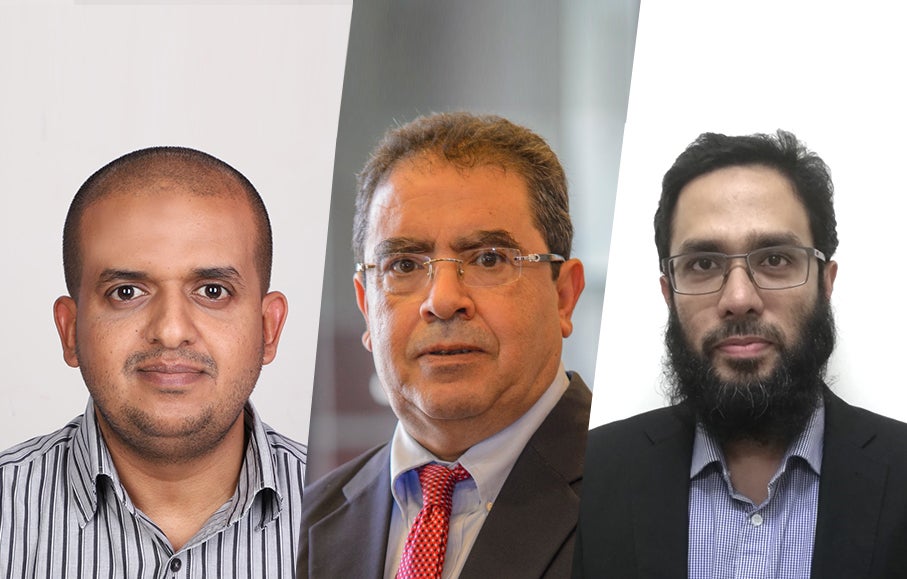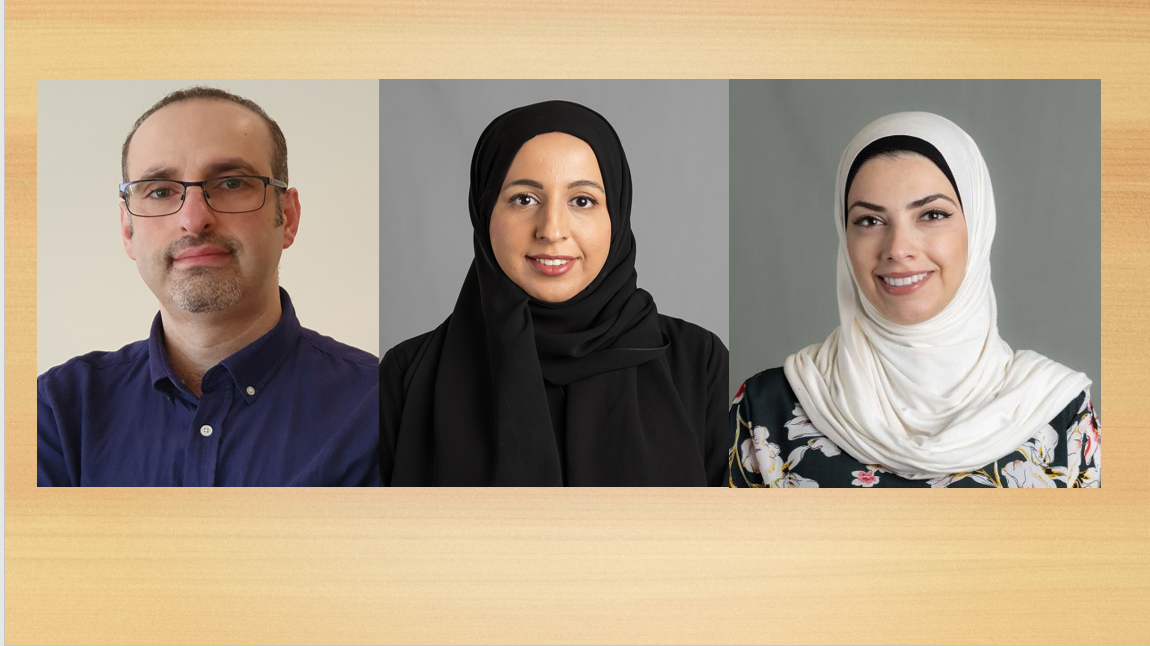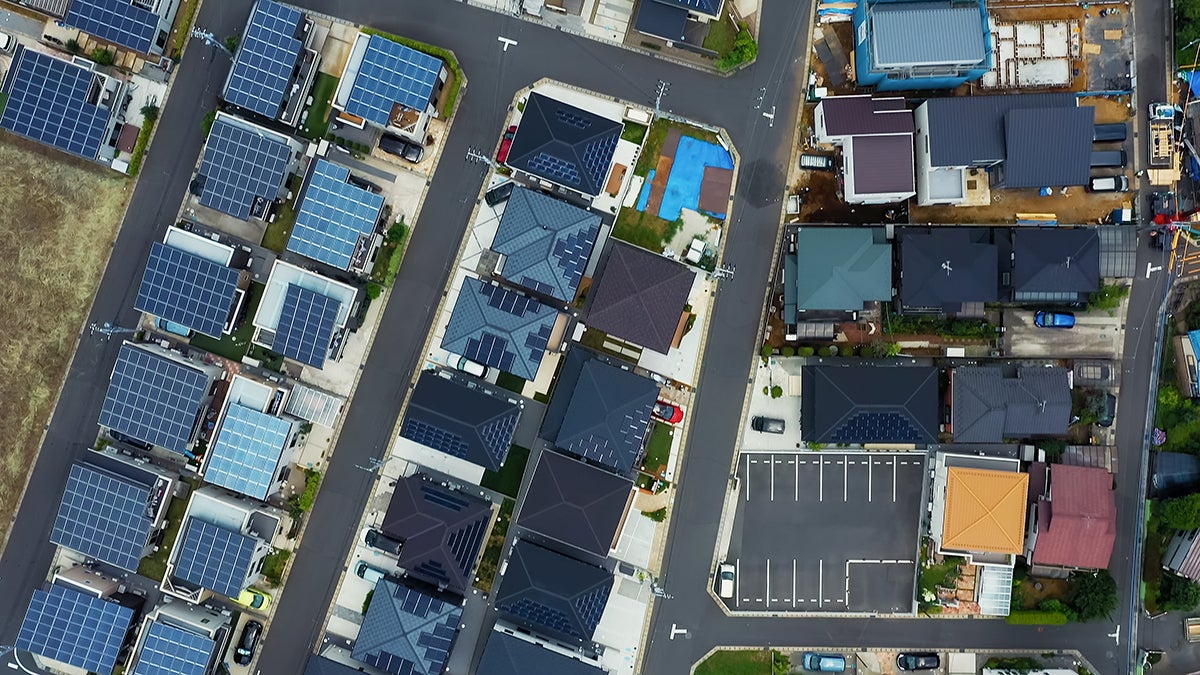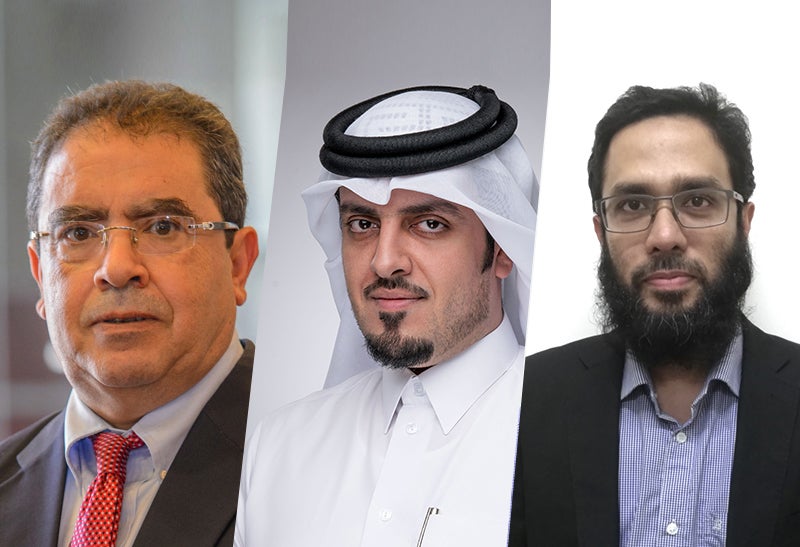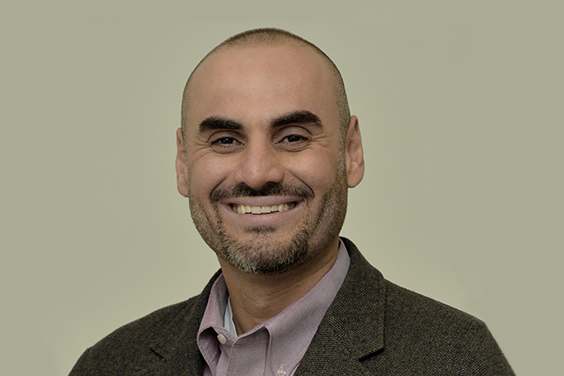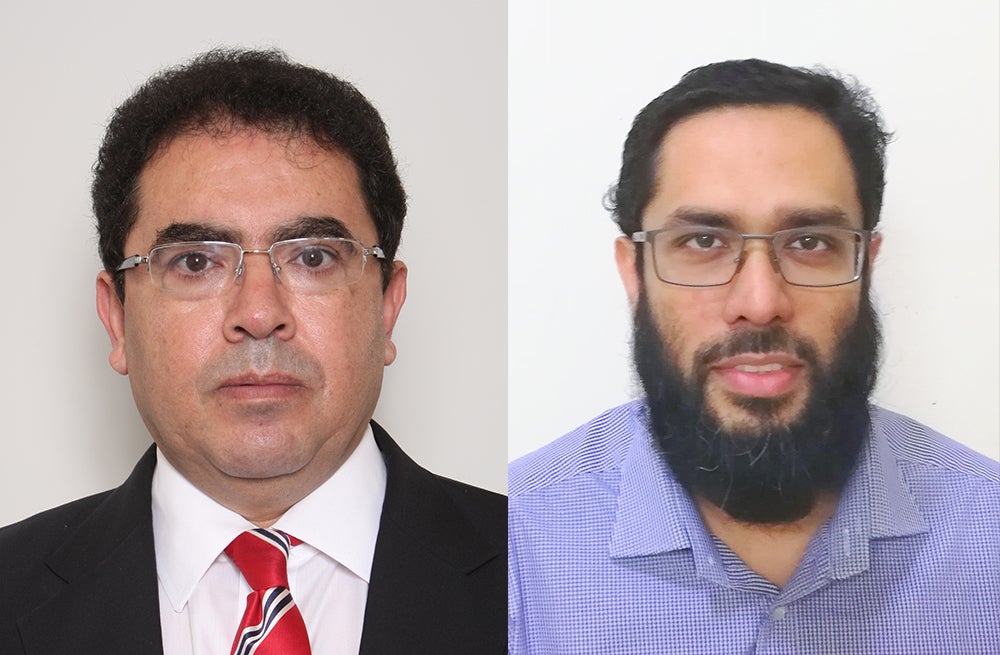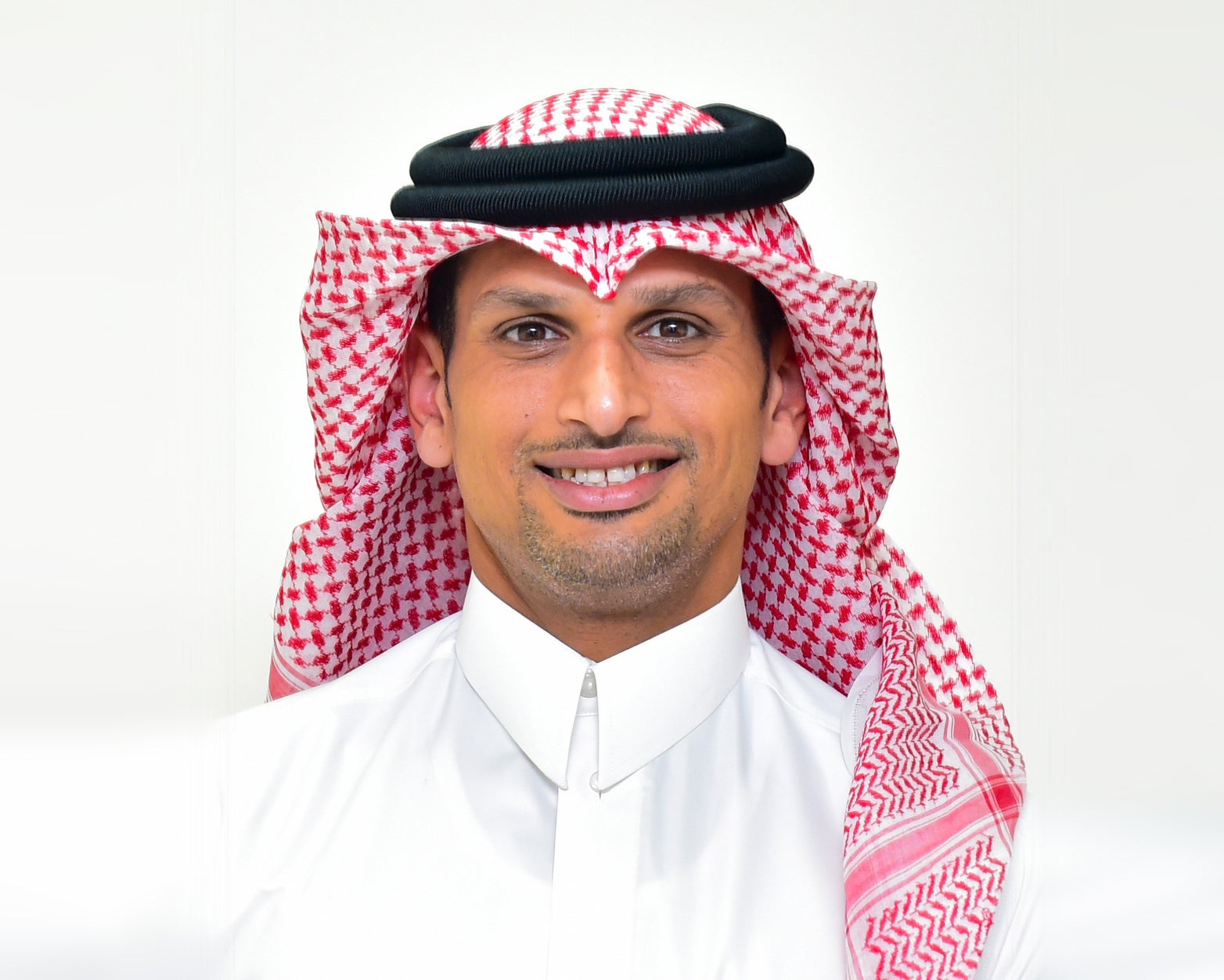
Using Technology Innovation for Greater Inclusivity
By Dr. Dena Al Thani*
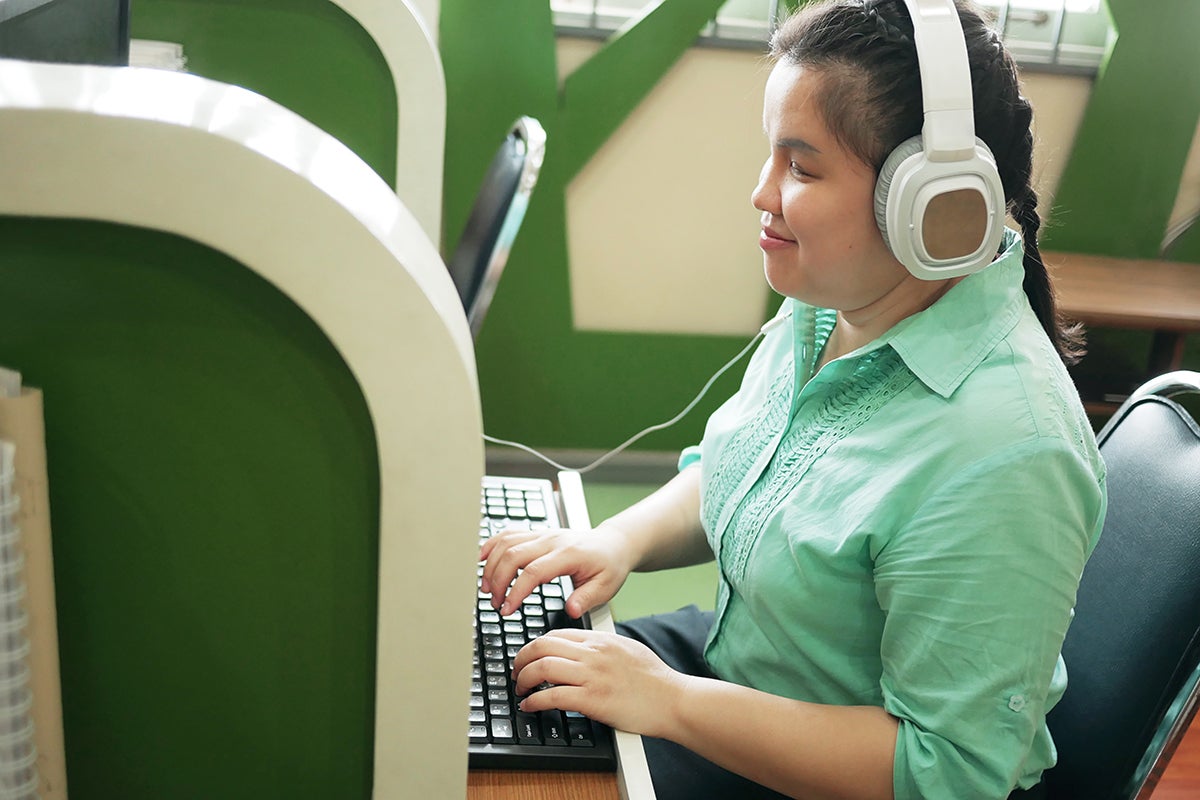
According to the World Bank, one billion people - or 15% of the world's population - experience some form of disability. This number is increasing as populations age and chronic health conditions rise. As a result, governments worldwide consider disability an important group when establishing policies, laws, and regulations. This aligns with efforts on the global stage, such as the adoption of the United Nations Convention on the Rights of Persons with Disabilities (CRPD) in 2006. International awareness is also reflected in research, development, and innovation (RDI) that benefit persons with disabilities. Today, the rapid advancement in technology development has contributed more than ever to promoting and accelerating RDI activities that aim to achieve accessibility and inclusion.
Enablers of inclusion
Artificial Intelligence (AI) and the Internet of Things (IoT) must be considered the key enablers of inclusion. From smartphone and smartwatch applications that utilize these technologies in nearly every feature, to conversational-based assistants and wearable health sensors, AI and IoT technologies are already integrated into our lives and daily activities. Yet, these technological advances might not benefit the disability community to the extent it does other communities. For example, visually impaired users who employ screen readers to access their smartphone interface will not fully benefit from current advancements in technology.
However, over the past few years, many RDI advances have presented solutions that improve the daily lives of people with disability, ranging from smart canes and route planner applications for the blind to robotic arms and AI-supported prosthetic limbs.
While these advances are considered significant in the realm of disability and assistive technology, they are, in fact, very modest attempts when compared with the innovation research agenda in other domains of application such as health and education. Greater and more steady efforts are needed so that new advancements in AI and IoT research can be a force for good for people with disability, bridging the inequality gaps and, in some cases paving the way to designing technologies for all.
In the realm of the digital world around us, we find many technologies originally designed for people with disability in mind which have later become universal. Audiobooks, for instance, were initially invented for the blind community in the United States in the late 1930s. It was only during the last two decades that audiobooks came to have a wider appeal for the population at large. It has since become the fastest-growing segment in publishing by generating over $1.2 billion in revenue in 2018 alone. There are many other examples, such as the hands-free feature for using our smartphones while driving and increasing the font size using the phone’s accessibility settings to avoid using reading glasses.
Inclusivity in technology
When it comes to mainstream products and services, we are increasingly seeing technology giants such as Microsoft and Google becoming more inclusive. This is evident in the accessibility features offered by Microsoft in all its mainstream Office software, Google’s built-in internet browser screen reader, or Apple's wide range of capabilities that allow multi-modal interaction.
Inclusive design - also referred to as universal design and design for all - is a call towards more inclusivity in product design and development practice. It encourages the creation of solutions accessible to and usable by as many people as possible and in as many different contexts. This, of course, includes an innovative component of the process.
Demand for inclusive design emphasizes the role of empathy and the necessary recognition that users come with different abilities, vast needs, and from a variety of backgrounds. It often puts people in the center of its activities from the very start. This approach also implies that we see the differences in users as an opportunity to innovate and flourish and not as a challenge to overcome.
Global collaboration
With the advances in AI, IoT, and other technological advancements such as machine-brain interface, natural language processing, and voice and image recognition, the world has a bigger chance to be more inclusive. Through innovation, technology users, with all their diversities: ability, language, color, background, and other human differences, must be offered a voice in the RDI process. Designing for inclusion means continuously involving users at the different stages of conceptualization, design, and development to push the boundaries in innovation and pave the way for a future where no user gets left behind. This will require a global network of researchers, policymakers, users, and designers working together to reduce inequalities in the world of a billion disabled users.
*Dr. Dena Al Thani is an Assistant Professor and the Director of Interdisciplinary Programs at the College of Science and Engineering at Hamad Bin Khalifa University
This article is submitted on behalf of the author by the HBKU Communications Directorate. The views expressed are the author’s own and do not necessarily reflect the University’s official stance.
Related News
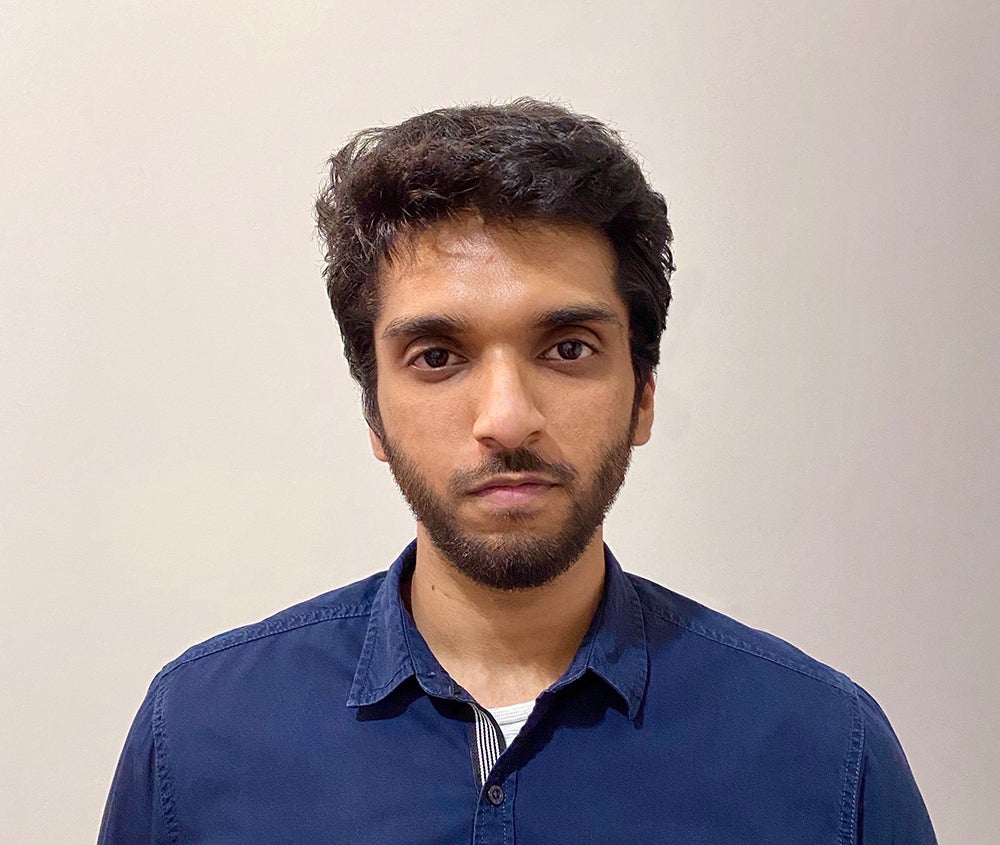
Statistical Modeling Can Help Us Understand How Phase Two of the Lockdown Lift is Faring
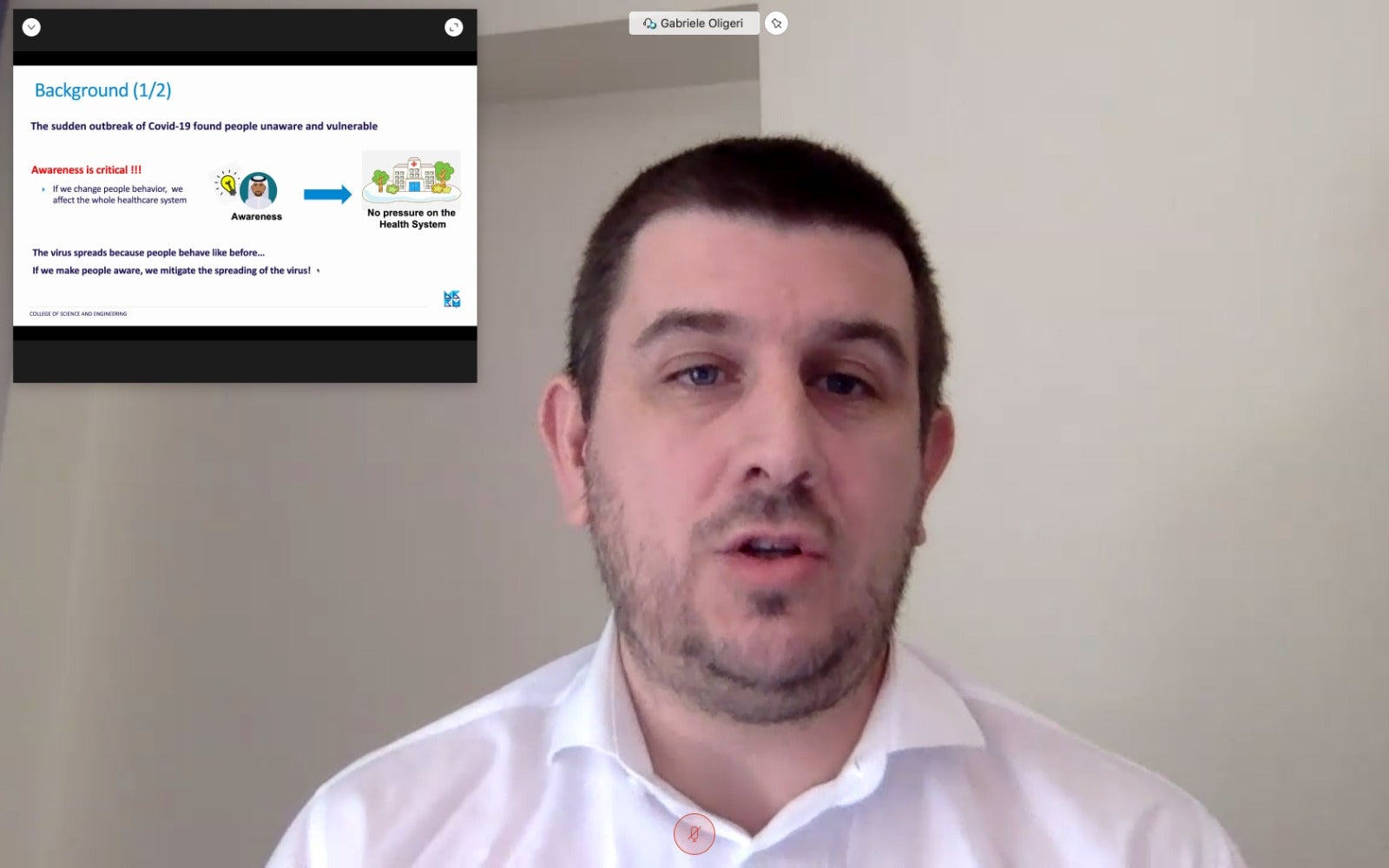
HBKU’s College of Science and Engineering Collaborates with MoTC to Deliver Webinar Series
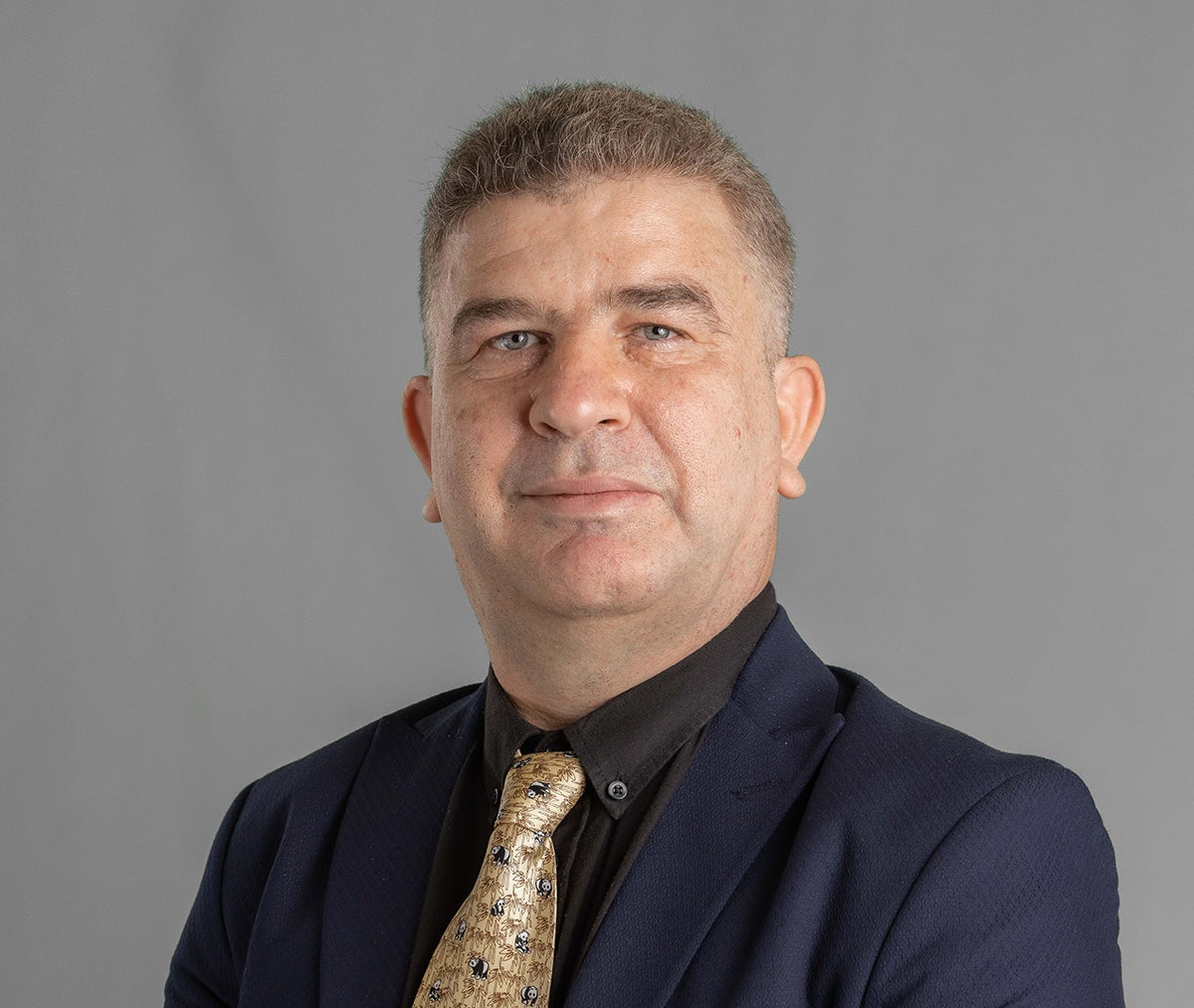
Human-Machine Interaction: HBKU’s Smart Vision Sensor Aims for Next-Level Intelligence
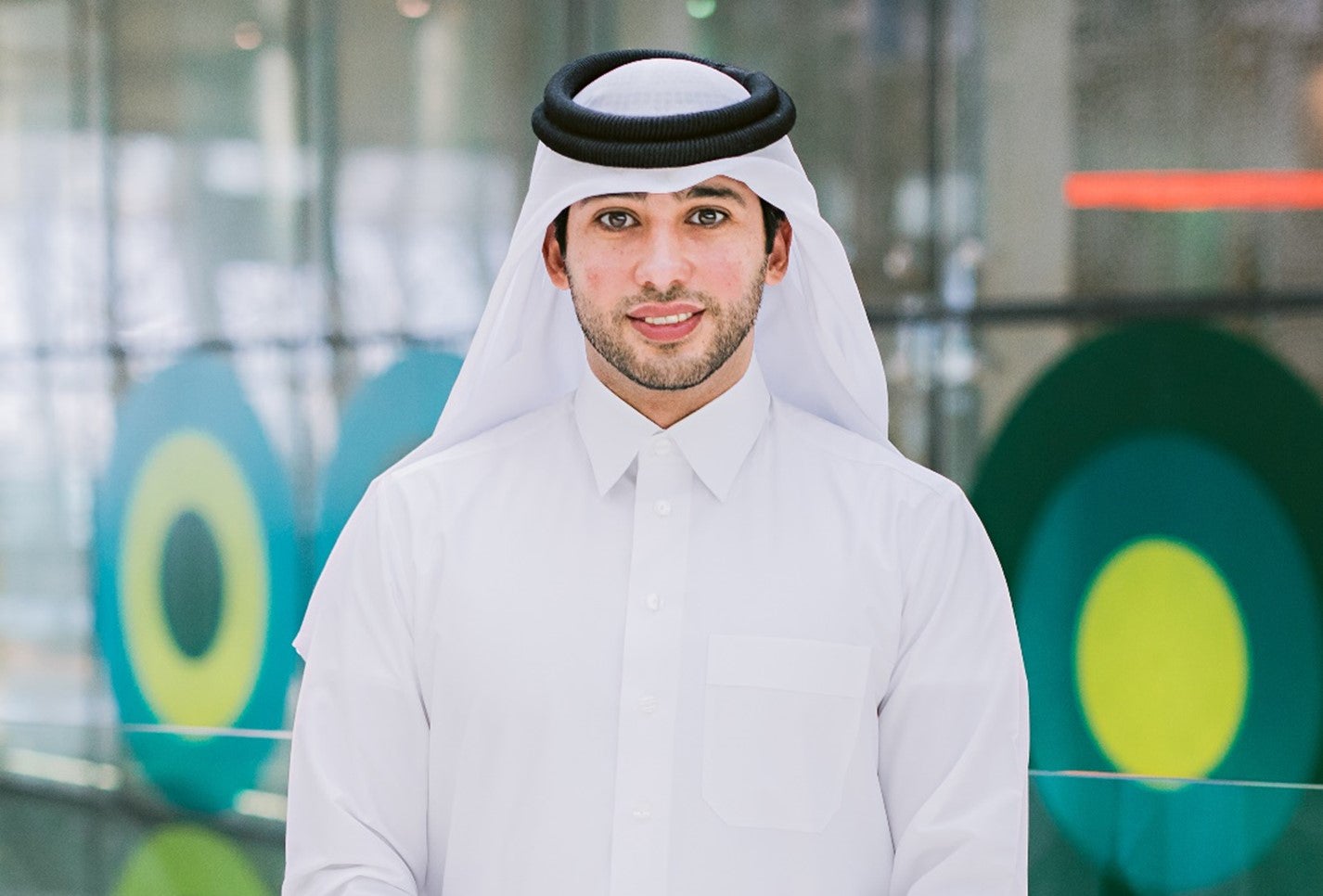
Record-Setting Billion-Cell Reservoir Simulation for Giant Oil and Gas Fields Achieved by HBKU’s College of Science and Engineering
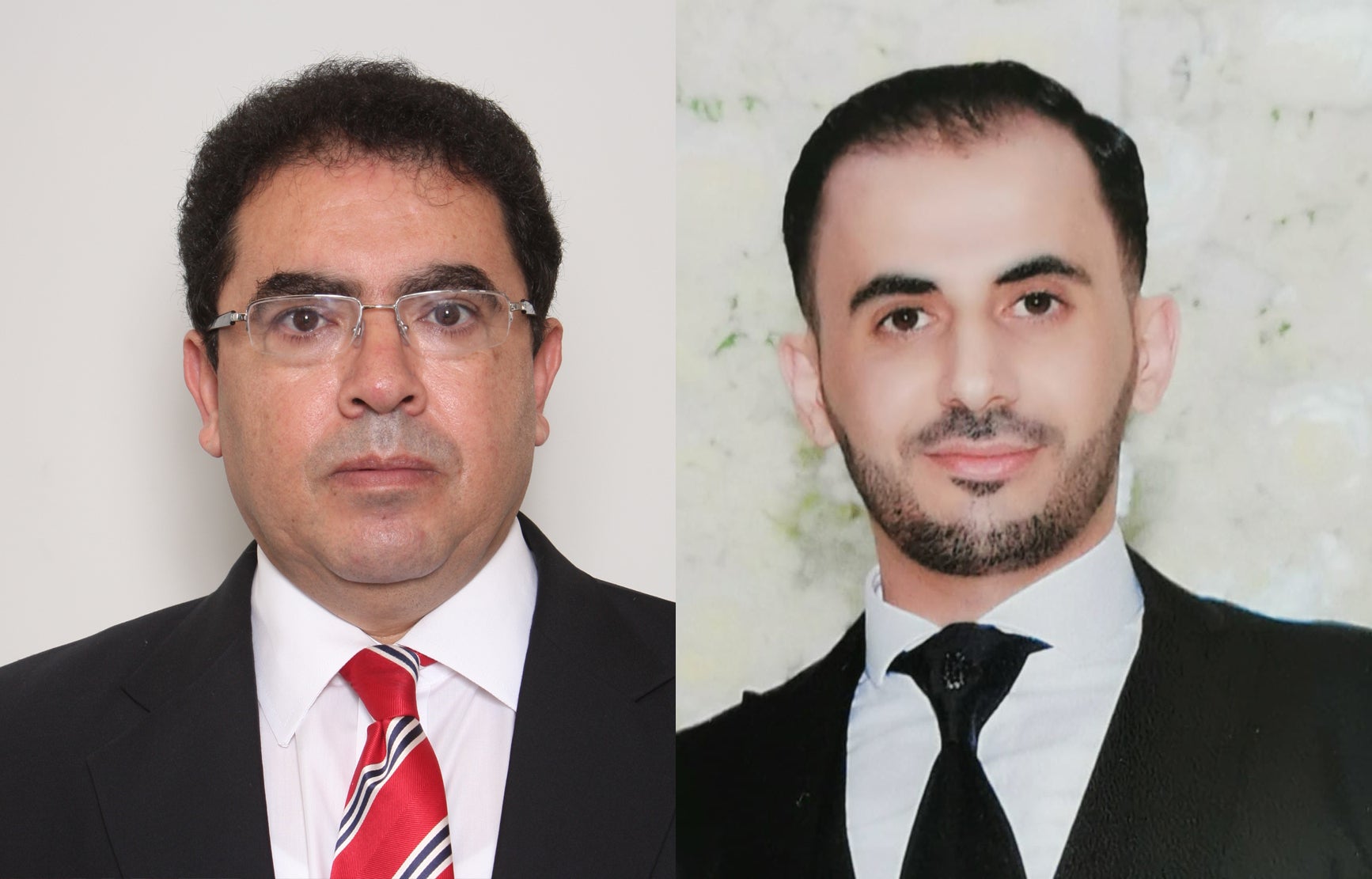
HBKU’s College of Science and Engineering Delivers Training on Health Informatics Research Methods
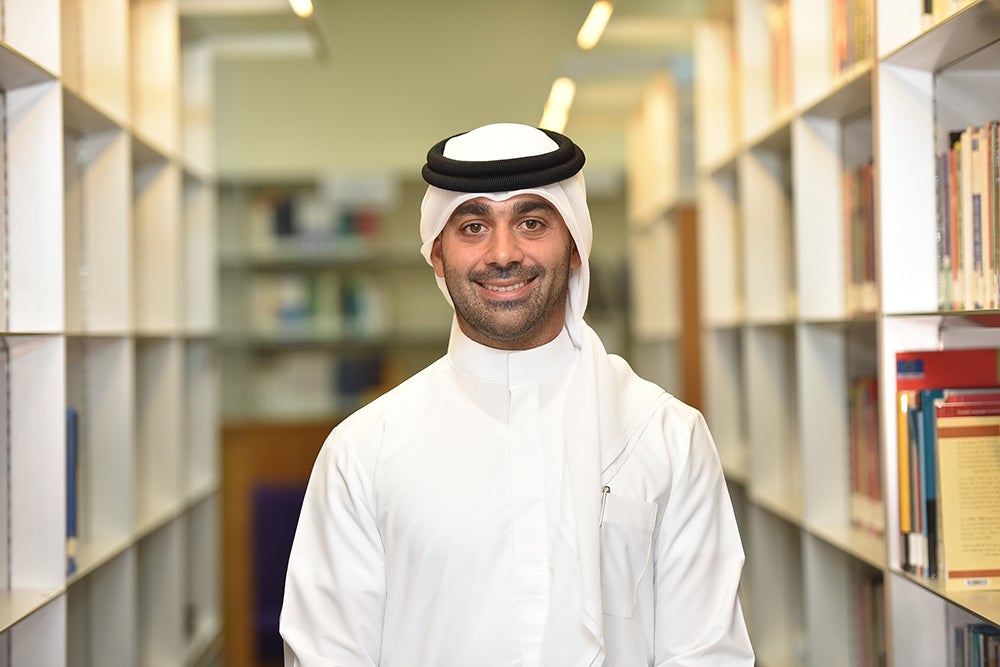
QF's HBKU and Norwegian Company Yara Sign Agreement to Support Food Security Efforts

Statistical Modeling Can Help Us Understand How Phase Two of the Lockdown Lift is Faring

HBKU’s College of Science and Engineering Collaborates with MoTC to Deliver Webinar Series

Human-Machine Interaction: HBKU’s Smart Vision Sensor Aims for Next-Level Intelligence

Record-Setting Billion-Cell Reservoir Simulation for Giant Oil and Gas Fields Achieved by HBKU’s College of Science and Engineering

HBKU’s College of Science and Engineering Delivers Training on Health Informatics Research Methods

QF's HBKU and Norwegian Company Yara Sign Agreement to Support Food Security Efforts

Statistical Modeling Can Help Us Understand How Phase Two of the Lockdown Lift is Faring

HBKU’s College of Science and Engineering Collaborates with MoTC to Deliver Webinar Series

Human-Machine Interaction: HBKU’s Smart Vision Sensor Aims for Next-Level Intelligence

Record-Setting Billion-Cell Reservoir Simulation for Giant Oil and Gas Fields Achieved by HBKU’s College of Science and Engineering

HBKU’s College of Science and Engineering Delivers Training on Health Informatics Research Methods

QF's HBKU and Norwegian Company Yara Sign Agreement to Support Food Security Efforts

Statistical Modeling Can Help Us Understand How Phase Two of the Lockdown Lift is Faring

HBKU’s College of Science and Engineering Collaborates with MoTC to Deliver Webinar Series

Human-Machine Interaction: HBKU’s Smart Vision Sensor Aims for Next-Level Intelligence

Record-Setting Billion-Cell Reservoir Simulation for Giant Oil and Gas Fields Achieved by HBKU’s College of Science and Engineering

HBKU’s College of Science and Engineering Delivers Training on Health Informatics Research Methods

QF's HBKU and Norwegian Company Yara Sign Agreement to Support Food Security Efforts

Statistical Modeling Can Help Us Understand How Phase Two of the Lockdown Lift is Faring

HBKU’s College of Science and Engineering Collaborates with MoTC to Deliver Webinar Series

Human-Machine Interaction: HBKU’s Smart Vision Sensor Aims for Next-Level Intelligence

Record-Setting Billion-Cell Reservoir Simulation for Giant Oil and Gas Fields Achieved by HBKU’s College of Science and Engineering

HBKU’s College of Science and Engineering Delivers Training on Health Informatics Research Methods

QF's HBKU and Norwegian Company Yara Sign Agreement to Support Food Security Efforts

Statistical Modeling Can Help Us Understand How Phase Two of the Lockdown Lift is Faring

HBKU’s College of Science and Engineering Collaborates with MoTC to Deliver Webinar Series

Human-Machine Interaction: HBKU’s Smart Vision Sensor Aims for Next-Level Intelligence

Record-Setting Billion-Cell Reservoir Simulation for Giant Oil and Gas Fields Achieved by HBKU’s College of Science and Engineering

HBKU’s College of Science and Engineering Delivers Training on Health Informatics Research Methods

QF's HBKU and Norwegian Company Yara Sign Agreement to Support Food Security Efforts

Statistical Modeling Can Help Us Understand How Phase Two of the Lockdown Lift is Faring

HBKU’s College of Science and Engineering Collaborates with MoTC to Deliver Webinar Series

Human-Machine Interaction: HBKU’s Smart Vision Sensor Aims for Next-Level Intelligence

Record-Setting Billion-Cell Reservoir Simulation for Giant Oil and Gas Fields Achieved by HBKU’s College of Science and Engineering

HBKU’s College of Science and Engineering Delivers Training on Health Informatics Research Methods

QF's HBKU and Norwegian Company Yara Sign Agreement to Support Food Security Efforts

Statistical Modeling Can Help Us Understand How Phase Two of the Lockdown Lift is Faring

HBKU’s College of Science and Engineering Collaborates with MoTC to Deliver Webinar Series

Human-Machine Interaction: HBKU’s Smart Vision Sensor Aims for Next-Level Intelligence

Record-Setting Billion-Cell Reservoir Simulation for Giant Oil and Gas Fields Achieved by HBKU’s College of Science and Engineering

HBKU’s College of Science and Engineering Delivers Training on Health Informatics Research Methods

QF's HBKU and Norwegian Company Yara Sign Agreement to Support Food Security Efforts

Statistical Modeling Can Help Us Understand How Phase Two of the Lockdown Lift is Faring

HBKU’s College of Science and Engineering Collaborates with MoTC to Deliver Webinar Series

Human-Machine Interaction: HBKU’s Smart Vision Sensor Aims for Next-Level Intelligence

Record-Setting Billion-Cell Reservoir Simulation for Giant Oil and Gas Fields Achieved by HBKU’s College of Science and Engineering

HBKU’s College of Science and Engineering Delivers Training on Health Informatics Research Methods

QF's HBKU and Norwegian Company Yara Sign Agreement to Support Food Security Efforts

Statistical Modeling Can Help Us Understand How Phase Two of the Lockdown Lift is Faring

HBKU’s College of Science and Engineering Collaborates with MoTC to Deliver Webinar Series

Human-Machine Interaction: HBKU’s Smart Vision Sensor Aims for Next-Level Intelligence

Record-Setting Billion-Cell Reservoir Simulation for Giant Oil and Gas Fields Achieved by HBKU’s College of Science and Engineering

HBKU’s College of Science and Engineering Delivers Training on Health Informatics Research Methods

QF's HBKU and Norwegian Company Yara Sign Agreement to Support Food Security Efforts

Statistical Modeling Can Help Us Understand How Phase Two of the Lockdown Lift is Faring

HBKU’s College of Science and Engineering Collaborates with MoTC to Deliver Webinar Series

Human-Machine Interaction: HBKU’s Smart Vision Sensor Aims for Next-Level Intelligence

Record-Setting Billion-Cell Reservoir Simulation for Giant Oil and Gas Fields Achieved by HBKU’s College of Science and Engineering

HBKU’s College of Science and Engineering Delivers Training on Health Informatics Research Methods

QF's HBKU and Norwegian Company Yara Sign Agreement to Support Food Security Efforts

Statistical Modeling Can Help Us Understand How Phase Two of the Lockdown Lift is Faring

HBKU’s College of Science and Engineering Collaborates with MoTC to Deliver Webinar Series

Human-Machine Interaction: HBKU’s Smart Vision Sensor Aims for Next-Level Intelligence

Record-Setting Billion-Cell Reservoir Simulation for Giant Oil and Gas Fields Achieved by HBKU’s College of Science and Engineering

HBKU’s College of Science and Engineering Delivers Training on Health Informatics Research Methods

QF's HBKU and Norwegian Company Yara Sign Agreement to Support Food Security Efforts

Statistical Modeling Can Help Us Understand How Phase Two of the Lockdown Lift is Faring

HBKU’s College of Science and Engineering Collaborates with MoTC to Deliver Webinar Series

Human-Machine Interaction: HBKU’s Smart Vision Sensor Aims for Next-Level Intelligence

Record-Setting Billion-Cell Reservoir Simulation for Giant Oil and Gas Fields Achieved by HBKU’s College of Science and Engineering

HBKU’s College of Science and Engineering Delivers Training on Health Informatics Research Methods

QF's HBKU and Norwegian Company Yara Sign Agreement to Support Food Security Efforts

Statistical Modeling Can Help Us Understand How Phase Two of the Lockdown Lift is Faring

HBKU’s College of Science and Engineering Collaborates with MoTC to Deliver Webinar Series

Human-Machine Interaction: HBKU’s Smart Vision Sensor Aims for Next-Level Intelligence

Record-Setting Billion-Cell Reservoir Simulation for Giant Oil and Gas Fields Achieved by HBKU’s College of Science and Engineering

HBKU’s College of Science and Engineering Delivers Training on Health Informatics Research Methods

QF's HBKU and Norwegian Company Yara Sign Agreement to Support Food Security Efforts

Statistical Modeling Can Help Us Understand How Phase Two of the Lockdown Lift is Faring

HBKU’s College of Science and Engineering Collaborates with MoTC to Deliver Webinar Series

Human-Machine Interaction: HBKU’s Smart Vision Sensor Aims for Next-Level Intelligence

Record-Setting Billion-Cell Reservoir Simulation for Giant Oil and Gas Fields Achieved by HBKU’s College of Science and Engineering

HBKU’s College of Science and Engineering Delivers Training on Health Informatics Research Methods

QF's HBKU and Norwegian Company Yara Sign Agreement to Support Food Security Efforts

Statistical Modeling Can Help Us Understand How Phase Two of the Lockdown Lift is Faring

HBKU’s College of Science and Engineering Collaborates with MoTC to Deliver Webinar Series

Human-Machine Interaction: HBKU’s Smart Vision Sensor Aims for Next-Level Intelligence

Record-Setting Billion-Cell Reservoir Simulation for Giant Oil and Gas Fields Achieved by HBKU’s College of Science and Engineering

HBKU’s College of Science and Engineering Delivers Training on Health Informatics Research Methods

QF's HBKU and Norwegian Company Yara Sign Agreement to Support Food Security Efforts

Statistical Modeling Can Help Us Understand How Phase Two of the Lockdown Lift is Faring

HBKU’s College of Science and Engineering Collaborates with MoTC to Deliver Webinar Series

Human-Machine Interaction: HBKU’s Smart Vision Sensor Aims for Next-Level Intelligence

Record-Setting Billion-Cell Reservoir Simulation for Giant Oil and Gas Fields Achieved by HBKU’s College of Science and Engineering

HBKU’s College of Science and Engineering Delivers Training on Health Informatics Research Methods

QF's HBKU and Norwegian Company Yara Sign Agreement to Support Food Security Efforts

Statistical Modeling Can Help Us Understand How Phase Two of the Lockdown Lift is Faring

HBKU’s College of Science and Engineering Collaborates with MoTC to Deliver Webinar Series

Human-Machine Interaction: HBKU’s Smart Vision Sensor Aims for Next-Level Intelligence

Record-Setting Billion-Cell Reservoir Simulation for Giant Oil and Gas Fields Achieved by HBKU’s College of Science and Engineering

HBKU’s College of Science and Engineering Delivers Training on Health Informatics Research Methods

QF's HBKU and Norwegian Company Yara Sign Agreement to Support Food Security Efforts

Statistical Modeling Can Help Us Understand How Phase Two of the Lockdown Lift is Faring

HBKU’s College of Science and Engineering Collaborates with MoTC to Deliver Webinar Series

Human-Machine Interaction: HBKU’s Smart Vision Sensor Aims for Next-Level Intelligence

Record-Setting Billion-Cell Reservoir Simulation for Giant Oil and Gas Fields Achieved by HBKU’s College of Science and Engineering

HBKU’s College of Science and Engineering Delivers Training on Health Informatics Research Methods

QF's HBKU and Norwegian Company Yara Sign Agreement to Support Food Security Efforts

Statistical Modeling Can Help Us Understand How Phase Two of the Lockdown Lift is Faring

HBKU’s College of Science and Engineering Collaborates with MoTC to Deliver Webinar Series

Human-Machine Interaction: HBKU’s Smart Vision Sensor Aims for Next-Level Intelligence

Record-Setting Billion-Cell Reservoir Simulation for Giant Oil and Gas Fields Achieved by HBKU’s College of Science and Engineering

HBKU’s College of Science and Engineering Delivers Training on Health Informatics Research Methods

QF's HBKU and Norwegian Company Yara Sign Agreement to Support Food Security Efforts

Statistical Modeling Can Help Us Understand How Phase Two of the Lockdown Lift is Faring

HBKU’s College of Science and Engineering Collaborates with MoTC to Deliver Webinar Series

Human-Machine Interaction: HBKU’s Smart Vision Sensor Aims for Next-Level Intelligence

Record-Setting Billion-Cell Reservoir Simulation for Giant Oil and Gas Fields Achieved by HBKU’s College of Science and Engineering

HBKU’s College of Science and Engineering Delivers Training on Health Informatics Research Methods

QF's HBKU and Norwegian Company Yara Sign Agreement to Support Food Security Efforts

Statistical Modeling Can Help Us Understand How Phase Two of the Lockdown Lift is Faring

HBKU’s College of Science and Engineering Collaborates with MoTC to Deliver Webinar Series

Human-Machine Interaction: HBKU’s Smart Vision Sensor Aims for Next-Level Intelligence

Record-Setting Billion-Cell Reservoir Simulation for Giant Oil and Gas Fields Achieved by HBKU’s College of Science and Engineering

HBKU’s College of Science and Engineering Delivers Training on Health Informatics Research Methods

QF's HBKU and Norwegian Company Yara Sign Agreement to Support Food Security Efforts

Statistical Modeling Can Help Us Understand How Phase Two of the Lockdown Lift is Faring

HBKU’s College of Science and Engineering Collaborates with MoTC to Deliver Webinar Series

Human-Machine Interaction: HBKU’s Smart Vision Sensor Aims for Next-Level Intelligence

Record-Setting Billion-Cell Reservoir Simulation for Giant Oil and Gas Fields Achieved by HBKU’s College of Science and Engineering

HBKU’s College of Science and Engineering Delivers Training on Health Informatics Research Methods

QF's HBKU and Norwegian Company Yara Sign Agreement to Support Food Security Efforts

Statistical Modeling Can Help Us Understand How Phase Two of the Lockdown Lift is Faring

HBKU’s College of Science and Engineering Collaborates with MoTC to Deliver Webinar Series

Human-Machine Interaction: HBKU’s Smart Vision Sensor Aims for Next-Level Intelligence

Record-Setting Billion-Cell Reservoir Simulation for Giant Oil and Gas Fields Achieved by HBKU’s College of Science and Engineering

HBKU’s College of Science and Engineering Delivers Training on Health Informatics Research Methods

QF's HBKU and Norwegian Company Yara Sign Agreement to Support Food Security Efforts

Statistical Modeling Can Help Us Understand How Phase Two of the Lockdown Lift is Faring

HBKU’s College of Science and Engineering Collaborates with MoTC to Deliver Webinar Series

Human-Machine Interaction: HBKU’s Smart Vision Sensor Aims for Next-Level Intelligence

Record-Setting Billion-Cell Reservoir Simulation for Giant Oil and Gas Fields Achieved by HBKU’s College of Science and Engineering

HBKU’s College of Science and Engineering Delivers Training on Health Informatics Research Methods

QF's HBKU and Norwegian Company Yara Sign Agreement to Support Food Security Efforts

Statistical Modeling Can Help Us Understand How Phase Two of the Lockdown Lift is Faring

HBKU’s College of Science and Engineering Collaborates with MoTC to Deliver Webinar Series

Human-Machine Interaction: HBKU’s Smart Vision Sensor Aims for Next-Level Intelligence

Record-Setting Billion-Cell Reservoir Simulation for Giant Oil and Gas Fields Achieved by HBKU’s College of Science and Engineering

HBKU’s College of Science and Engineering Delivers Training on Health Informatics Research Methods

QF's HBKU and Norwegian Company Yara Sign Agreement to Support Food Security Efforts

Statistical Modeling Can Help Us Understand How Phase Two of the Lockdown Lift is Faring

HBKU’s College of Science and Engineering Collaborates with MoTC to Deliver Webinar Series

Human-Machine Interaction: HBKU’s Smart Vision Sensor Aims for Next-Level Intelligence

Record-Setting Billion-Cell Reservoir Simulation for Giant Oil and Gas Fields Achieved by HBKU’s College of Science and Engineering

HBKU’s College of Science and Engineering Delivers Training on Health Informatics Research Methods

QF's HBKU and Norwegian Company Yara Sign Agreement to Support Food Security Efforts

Statistical Modeling Can Help Us Understand How Phase Two of the Lockdown Lift is Faring

HBKU’s College of Science and Engineering Collaborates with MoTC to Deliver Webinar Series

Human-Machine Interaction: HBKU’s Smart Vision Sensor Aims for Next-Level Intelligence

Record-Setting Billion-Cell Reservoir Simulation for Giant Oil and Gas Fields Achieved by HBKU’s College of Science and Engineering

HBKU’s College of Science and Engineering Delivers Training on Health Informatics Research Methods

QF's HBKU and Norwegian Company Yara Sign Agreement to Support Food Security Efforts

Statistical Modeling Can Help Us Understand How Phase Two of the Lockdown Lift is Faring

HBKU’s College of Science and Engineering Collaborates with MoTC to Deliver Webinar Series

Human-Machine Interaction: HBKU’s Smart Vision Sensor Aims for Next-Level Intelligence

Record-Setting Billion-Cell Reservoir Simulation for Giant Oil and Gas Fields Achieved by HBKU’s College of Science and Engineering

HBKU’s College of Science and Engineering Delivers Training on Health Informatics Research Methods

QF's HBKU and Norwegian Company Yara Sign Agreement to Support Food Security Efforts

Statistical Modeling Can Help Us Understand How Phase Two of the Lockdown Lift is Faring

HBKU’s College of Science and Engineering Collaborates with MoTC to Deliver Webinar Series

Human-Machine Interaction: HBKU’s Smart Vision Sensor Aims for Next-Level Intelligence

Record-Setting Billion-Cell Reservoir Simulation for Giant Oil and Gas Fields Achieved by HBKU’s College of Science and Engineering

HBKU’s College of Science and Engineering Delivers Training on Health Informatics Research Methods

QF's HBKU and Norwegian Company Yara Sign Agreement to Support Food Security Efforts

Statistical Modeling Can Help Us Understand How Phase Two of the Lockdown Lift is Faring

HBKU’s College of Science and Engineering Collaborates with MoTC to Deliver Webinar Series

Human-Machine Interaction: HBKU’s Smart Vision Sensor Aims for Next-Level Intelligence

Record-Setting Billion-Cell Reservoir Simulation for Giant Oil and Gas Fields Achieved by HBKU’s College of Science and Engineering

HBKU’s College of Science and Engineering Delivers Training on Health Informatics Research Methods

QF's HBKU and Norwegian Company Yara Sign Agreement to Support Food Security Efforts

Statistical Modeling Can Help Us Understand How Phase Two of the Lockdown Lift is Faring

HBKU’s College of Science and Engineering Collaborates with MoTC to Deliver Webinar Series

Human-Machine Interaction: HBKU’s Smart Vision Sensor Aims for Next-Level Intelligence

Record-Setting Billion-Cell Reservoir Simulation for Giant Oil and Gas Fields Achieved by HBKU’s College of Science and Engineering

HBKU’s College of Science and Engineering Delivers Training on Health Informatics Research Methods

QF's HBKU and Norwegian Company Yara Sign Agreement to Support Food Security Efforts

Statistical Modeling Can Help Us Understand How Phase Two of the Lockdown Lift is Faring

HBKU’s College of Science and Engineering Collaborates with MoTC to Deliver Webinar Series

Human-Machine Interaction: HBKU’s Smart Vision Sensor Aims for Next-Level Intelligence

Record-Setting Billion-Cell Reservoir Simulation for Giant Oil and Gas Fields Achieved by HBKU’s College of Science and Engineering

HBKU’s College of Science and Engineering Delivers Training on Health Informatics Research Methods

QF's HBKU and Norwegian Company Yara Sign Agreement to Support Food Security Efforts

Statistical Modeling Can Help Us Understand How Phase Two of the Lockdown Lift is Faring

HBKU’s College of Science and Engineering Collaborates with MoTC to Deliver Webinar Series

Human-Machine Interaction: HBKU’s Smart Vision Sensor Aims for Next-Level Intelligence

Record-Setting Billion-Cell Reservoir Simulation for Giant Oil and Gas Fields Achieved by HBKU’s College of Science and Engineering

HBKU’s College of Science and Engineering Delivers Training on Health Informatics Research Methods

QF's HBKU and Norwegian Company Yara Sign Agreement to Support Food Security Efforts

Statistical Modeling Can Help Us Understand How Phase Two of the Lockdown Lift is Faring

HBKU’s College of Science and Engineering Collaborates with MoTC to Deliver Webinar Series

Human-Machine Interaction: HBKU’s Smart Vision Sensor Aims for Next-Level Intelligence

Record-Setting Billion-Cell Reservoir Simulation for Giant Oil and Gas Fields Achieved by HBKU’s College of Science and Engineering

HBKU’s College of Science and Engineering Delivers Training on Health Informatics Research Methods

QF's HBKU and Norwegian Company Yara Sign Agreement to Support Food Security Efforts

Statistical Modeling Can Help Us Understand How Phase Two of the Lockdown Lift is Faring

HBKU’s College of Science and Engineering Collaborates with MoTC to Deliver Webinar Series

Human-Machine Interaction: HBKU’s Smart Vision Sensor Aims for Next-Level Intelligence

Record-Setting Billion-Cell Reservoir Simulation for Giant Oil and Gas Fields Achieved by HBKU’s College of Science and Engineering

HBKU’s College of Science and Engineering Delivers Training on Health Informatics Research Methods

QF's HBKU and Norwegian Company Yara Sign Agreement to Support Food Security Efforts

Statistical Modeling Can Help Us Understand How Phase Two of the Lockdown Lift is Faring

HBKU’s College of Science and Engineering Collaborates with MoTC to Deliver Webinar Series

Human-Machine Interaction: HBKU’s Smart Vision Sensor Aims for Next-Level Intelligence

Record-Setting Billion-Cell Reservoir Simulation for Giant Oil and Gas Fields Achieved by HBKU’s College of Science and Engineering

HBKU’s College of Science and Engineering Delivers Training on Health Informatics Research Methods

QF's HBKU and Norwegian Company Yara Sign Agreement to Support Food Security Efforts

Statistical Modeling Can Help Us Understand How Phase Two of the Lockdown Lift is Faring

HBKU’s College of Science and Engineering Collaborates with MoTC to Deliver Webinar Series

Human-Machine Interaction: HBKU’s Smart Vision Sensor Aims for Next-Level Intelligence

Record-Setting Billion-Cell Reservoir Simulation for Giant Oil and Gas Fields Achieved by HBKU’s College of Science and Engineering

HBKU’s College of Science and Engineering Delivers Training on Health Informatics Research Methods

QF's HBKU and Norwegian Company Yara Sign Agreement to Support Food Security Efforts

Statistical Modeling Can Help Us Understand How Phase Two of the Lockdown Lift is Faring

HBKU’s College of Science and Engineering Collaborates with MoTC to Deliver Webinar Series

Human-Machine Interaction: HBKU’s Smart Vision Sensor Aims for Next-Level Intelligence

Record-Setting Billion-Cell Reservoir Simulation for Giant Oil and Gas Fields Achieved by HBKU’s College of Science and Engineering

HBKU’s College of Science and Engineering Delivers Training on Health Informatics Research Methods

QF's HBKU and Norwegian Company Yara Sign Agreement to Support Food Security Efforts

Statistical Modeling Can Help Us Understand How Phase Two of the Lockdown Lift is Faring

HBKU’s College of Science and Engineering Collaborates with MoTC to Deliver Webinar Series

Human-Machine Interaction: HBKU’s Smart Vision Sensor Aims for Next-Level Intelligence

Record-Setting Billion-Cell Reservoir Simulation for Giant Oil and Gas Fields Achieved by HBKU’s College of Science and Engineering

HBKU’s College of Science and Engineering Delivers Training on Health Informatics Research Methods

QF's HBKU and Norwegian Company Yara Sign Agreement to Support Food Security Efforts

Statistical Modeling Can Help Us Understand How Phase Two of the Lockdown Lift is Faring






